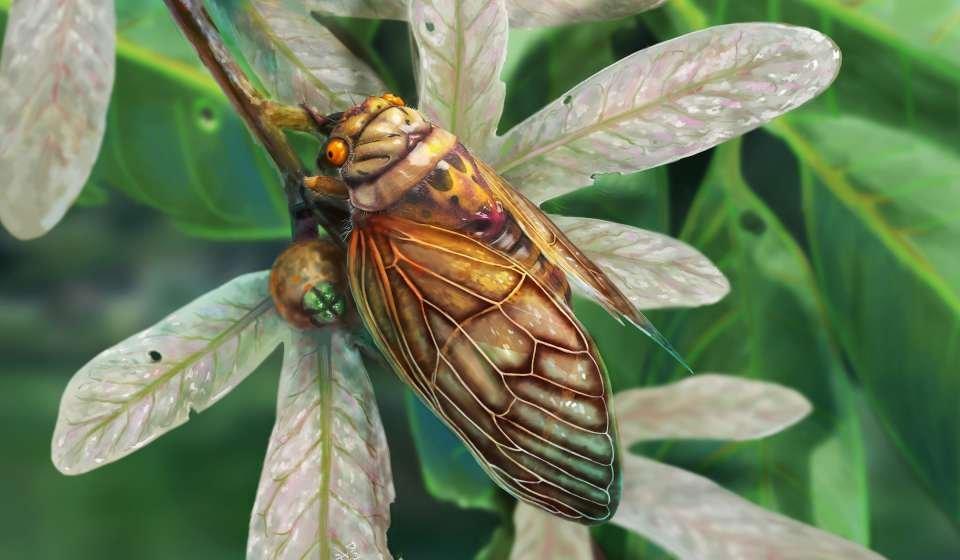47-Million-year-old Buzzing: First Fossil Cicada Discovered in the Messel Pit

Breaking News:
Kathmandu Nepal
Dienstag, Apr. 29, 2025

With a body length of around 26.5 millimeters and a wingspan of 68.2 millimeters, the adult female cicada from the 47-million-year-old oil shale of the Messel Pit has been almost completely preserved. “The family of true cicadas (Cicadidae) is one of the most species-rich insect groups today. Nevertheless, there are only very few fossil finds compared to the large number of modern species,” explains Dr. Sonja Wedmann from the Senckenberg Research Institute and Natural History Museum Frankfurt, and she continues, “Within this family, the Platypleurini group is particularly striking – it has a wide distribution and contains many different species with special characteristics. For the first time, we have now described a fossil from this group of cicadas.”
The newly described cicada species Eoplatypleura messelensis is notable not only for its size but also for its expansive and strikingly patterned wings. “These patterns are similar to those of modern cicada species of the Platypleurini group, which live in woods and scrubland. Given the subtropical vegetation in the Messel area around 47 million years ago, the coloration could have fulfilled a similar ecological function – for example as camouflage,” says first author Dr. Hui Jiang. The paleontologist was funded by a Senckenberg Global Fellowship and conducted the study during her research stay at the Senckenberg Research Station “Messel Pit. ”The new Messel fossil is characterized by a compact head with inconspicuous compound eyes and broad forewings with a noticeably curved leading edge. Although the fossil is a female, its classification suggests that males of this group were capable of producing loud mating calls,” adds Jiang.
To date, at least 44 fossil finds of cicadas have been documented from the Cenozoic era, the period beginning around 66 million years ago. “The cicada we have described as a new genus and species is one of the oldest known representatives of today’s true cicadas in Eurasia and represents the earliest record of the subfamily Cicadinae worldwide. It is also the first described buzzing cicada from the Messel Pit,” adds Senckenberg excavation supervisor Wedmann.
According to the study, the discovery not only expands our knowledge of the fauna of the Messel Pit but also closes an important gap in the history of cicadas in the Eocene. In the future, Eoplatypleura messelensis could serve as an important chronological reference for genetic studies on the evolutionary history of these animals and provide new insights into the origin and spread of the Platypleurini. Wedmann summarizes: “Every new fossil find from the Messel Pit UNESCO World Heritage Site is of great scientific importance. Insects account for a large part of biodiversity. Their fossil record helps us to better understand the development of complex ecosystems and ecological interactions. Fossils such as our true cicada offer fascinating insights into life around 47 million years ago and provide valuable information on the origins of today’s insect diversity.
Senckenberg – Leibniz Institution for Biodiversity and Earth System Research // Senckenberg Gesellschaft für Naturforschung
Senckenberganlage 25
60325 Frankfurt
Telefon: +49 (69) 7542-0
Telefax: +49 (69) 746238
http://www.senckenberg.de
![]()